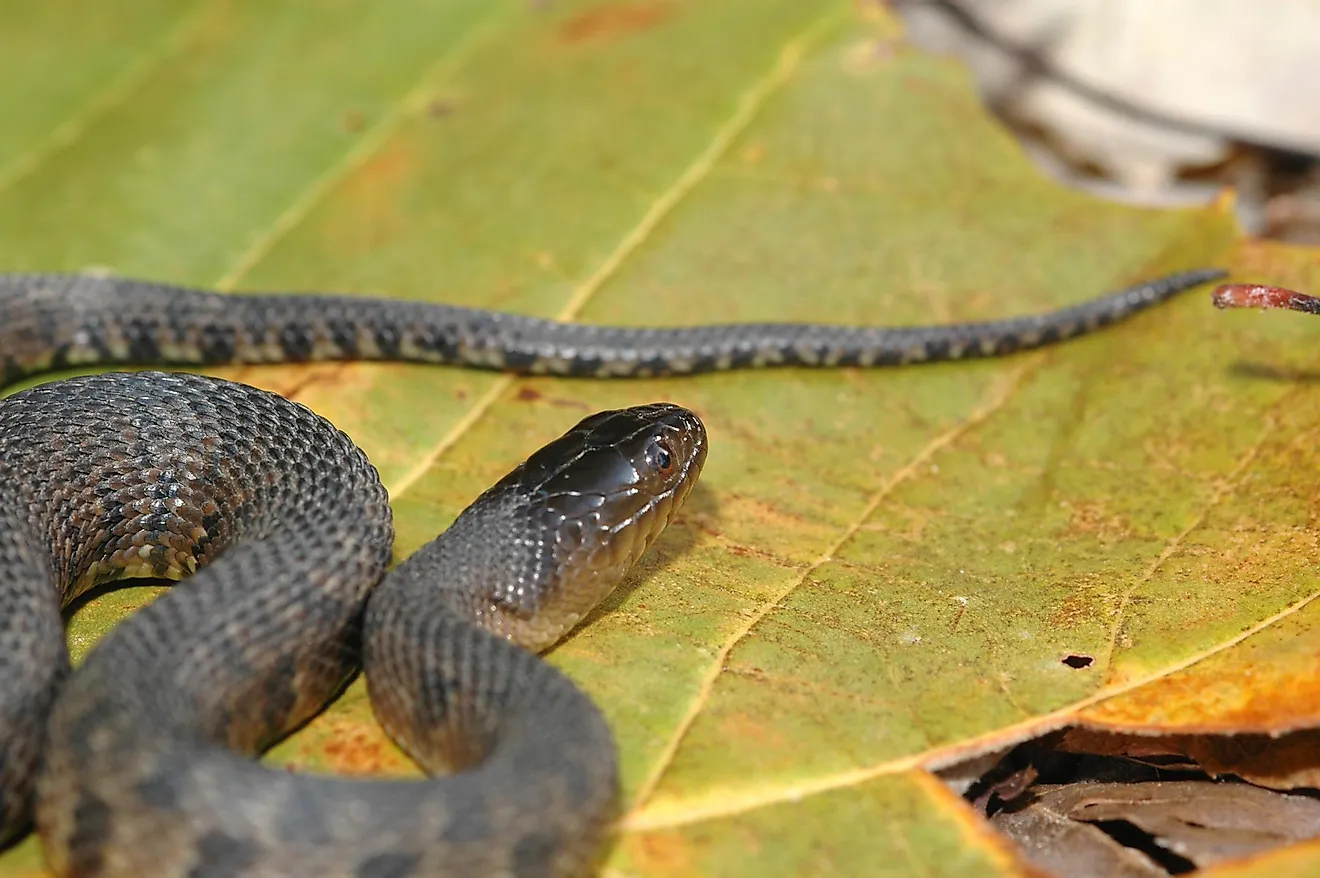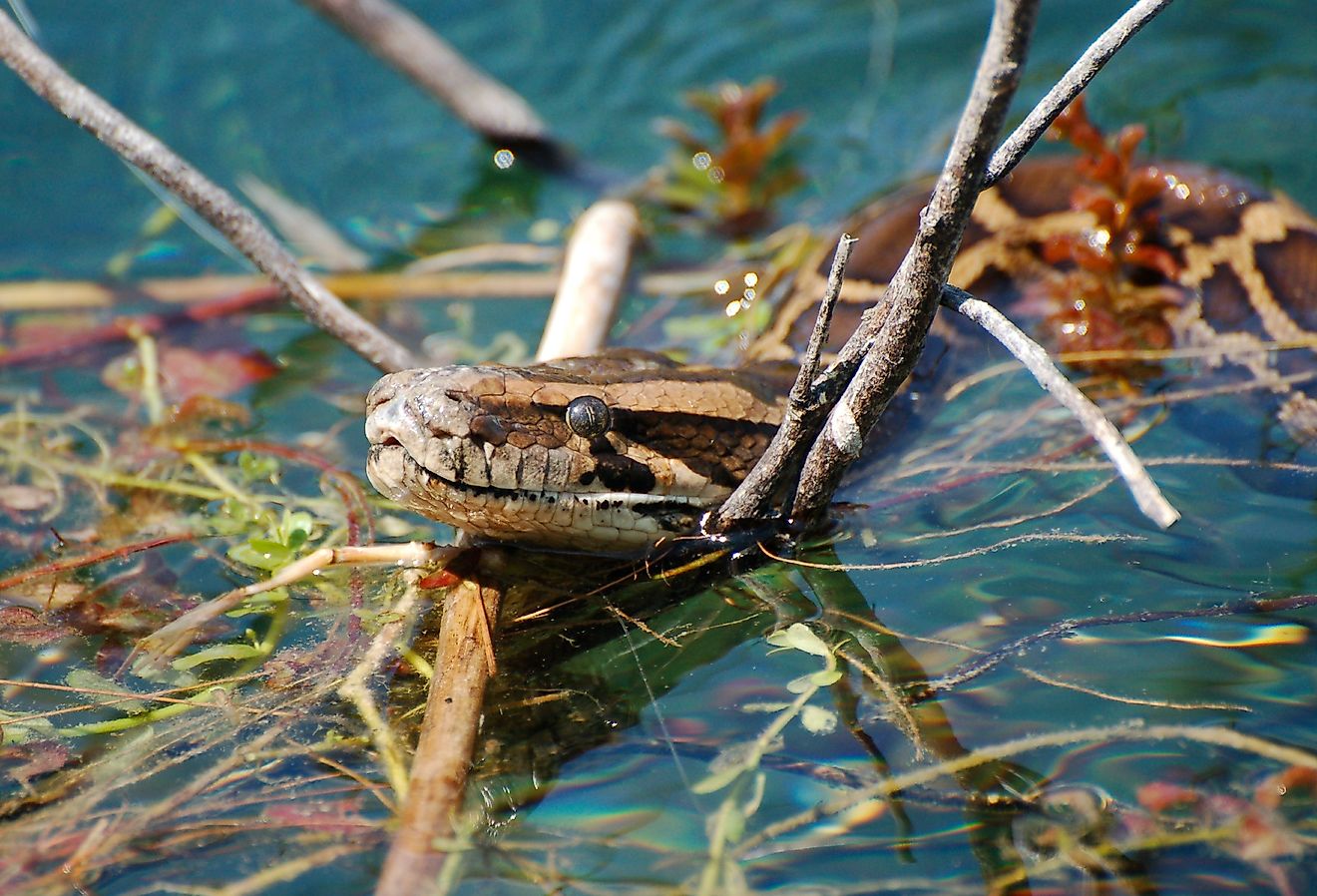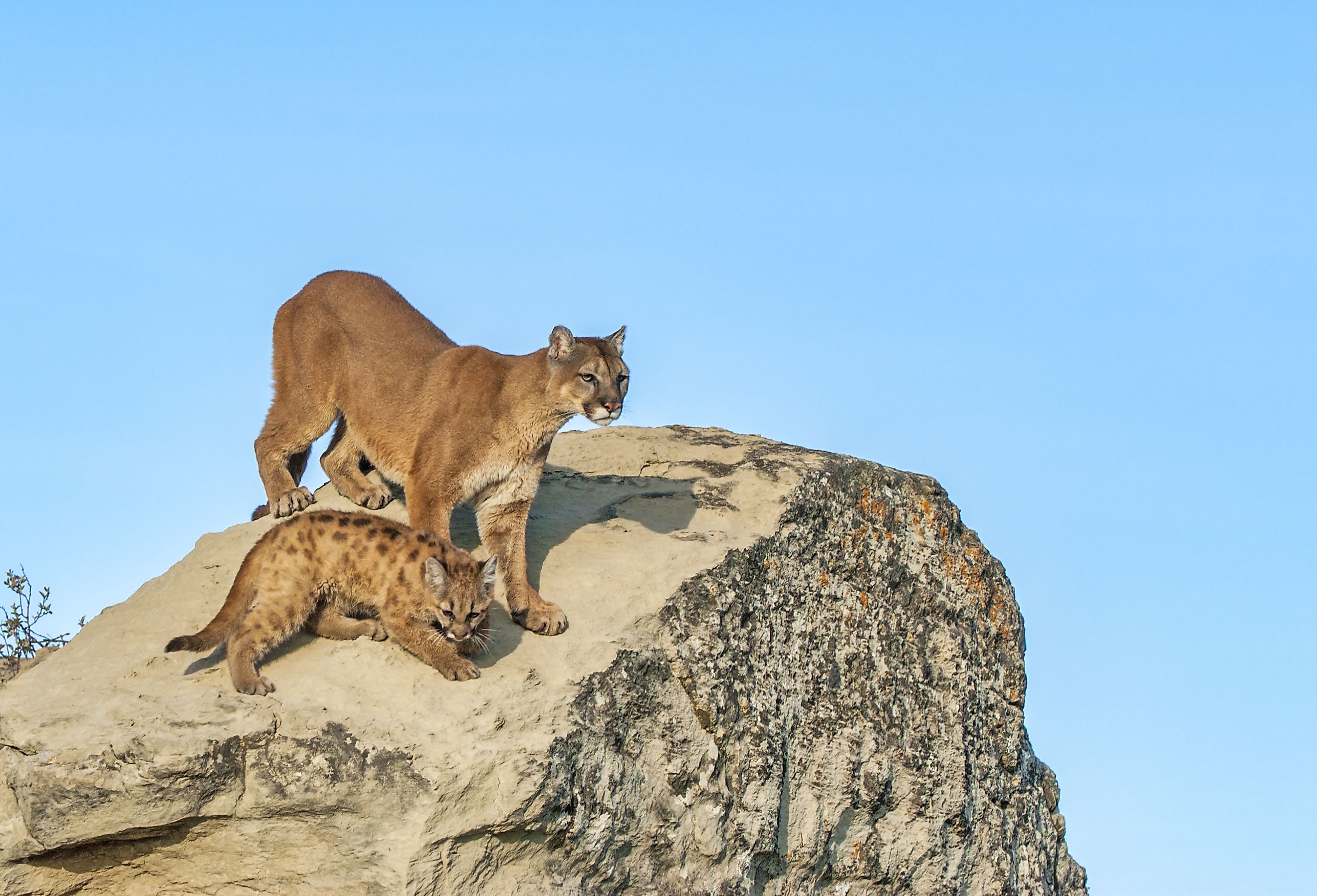
The 10 Deadliest Animals In North Dakota
North Dakota is known for its sweeping plains, rugged badlands, and a diverse array of wildlife that thrives in its varied ecosystems that embody the Upper Midwest and Great Plains. While the Peace Garden State’s nickname might lend the illusion of a tranquil natural wonderland devoid of danger, North Dakota’s ecosystem is actually quite the contrary- before you go hiking or driving in North Dakota, check this rundown of its deadliest animals first so you’re prepared and educated for whatever you might encounter.
American Bison
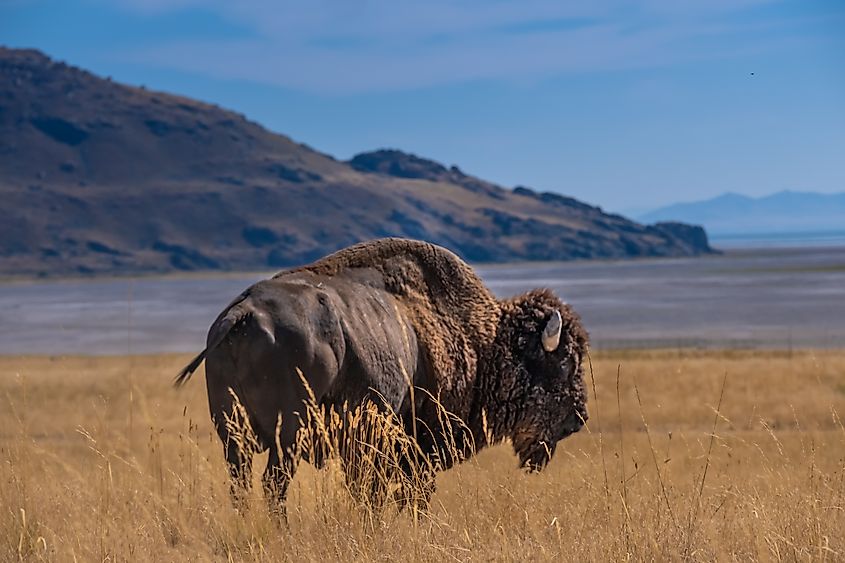
The American bison(Bison bison) is a massive mammal with a thick coat of dark brown fur, a large hump on its shoulders, and a pair of short, curved horns. Bison are commonly found in open grasslands and plains throughout North Dakota, particularly in Theodore Roosevelt National Park.
Despite their seemingly docile appearance, bison can be extremely dangerous if they feel threatened or provoked. They are known to charge at high speeds, and their sheer size and strength can cause severe injuries or even death. Keep a safe distance from bison, and never approach them for a closer look or a photograph. If you find yourself too close to a bison, slowly and calmly back away. Be especially vigilant on rural roads in their territory, as they could total your car (not to mention kill you).
Black Widow Spider
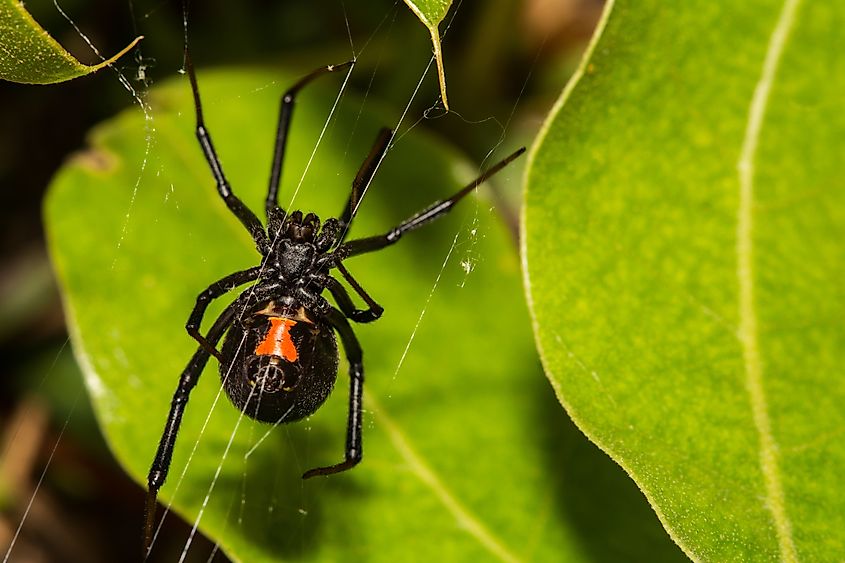
The black widow spider(Latrodectus mactans) is easily recognized by its shiny black body and the distinctive red hourglass shape on the underside of its abdomen that sparks fear in the beholder. These spiders prefer dark, sheltered areas and can often be found in woodpiles, garages, and sheds throughout North Dakota. The black widow’s venom is highly toxic and can cause severe pain, muscle cramps, and even paralysis. While bites are rarely fatal to healthy adults, they can be extremely dangerous to children, the elderly, and those with compromised immune systems. Wear gloves when handling firewood or cleaning out garages and sheds, and be cautious when reaching into dark areas or under ledges. If bitten, seek medical attention immediately, ESPECIALLY if you're immunocompromised.
Deer Tick
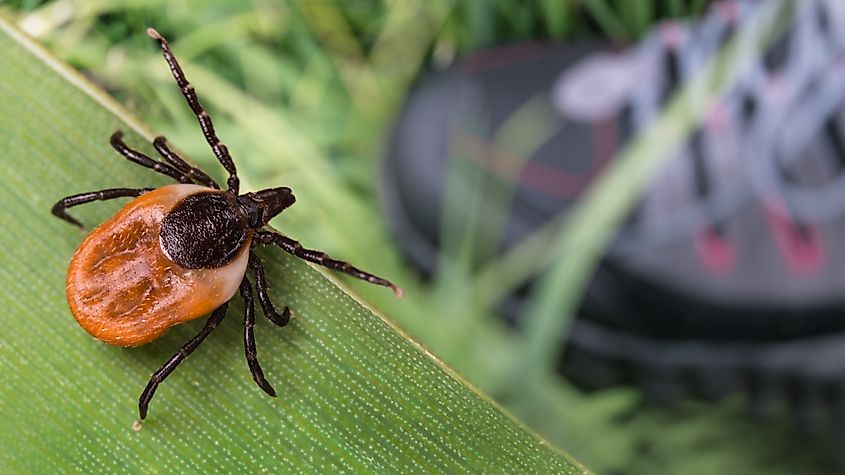
Deer ticks(Ixodes scapularis) are small, with a reddish-brown body and dark legs. Adult ticks are about the size of a sesame seed and are widespread across North Dakota, particularly in wooded and grassy areas. Deer ticks are carriers of Lyme disease, which can cause serious health problems, including debilitating and potentially chronic joint pain, neurological issues, and heart problems. Use insect repellent containing DEET when spending time outdoors, especially in tick-prone areas. Wear long sleeves and pants, and tuck your pants into your socks to ensure minimal exposure to skin. After being outdoors, check your body and clothing for ticks and remove any promptly. They love to brush onto you while in tall grass, and their size makes them especially difficult to find-- be thorough in your tick checks!
Cougar
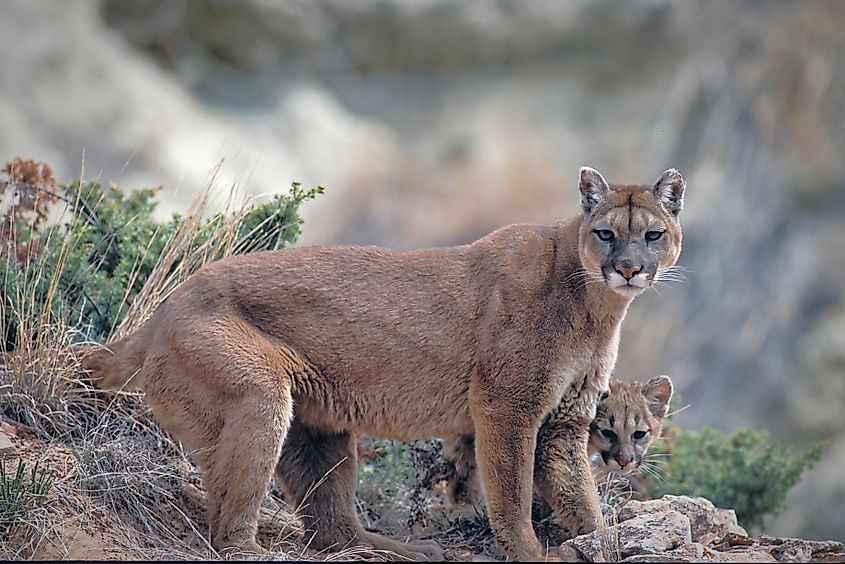
The cougar (Puma concolor), also known as the mountain lion, is a large, slender cat with a tawny coat, a white underbelly, and a long tail. Cougars are mostly found in the western part of North Dakota, particularly in the badlands and forested areas. Cougars are powerful predators capable of taking down large prey with strong bites and razor-sharp claws. While attacks on humans are rare, they can occur if the cougar feels threatened or is starving. Avoid hiking alone in cougar territory, especially at dawn or dusk. Keep children and pets close to you. If you encounter a cougar, make yourself appear larger, maintain eye contact, and back away slowly. Do not run-- it will chase you, and it will win.
Prairie Rattlesnake
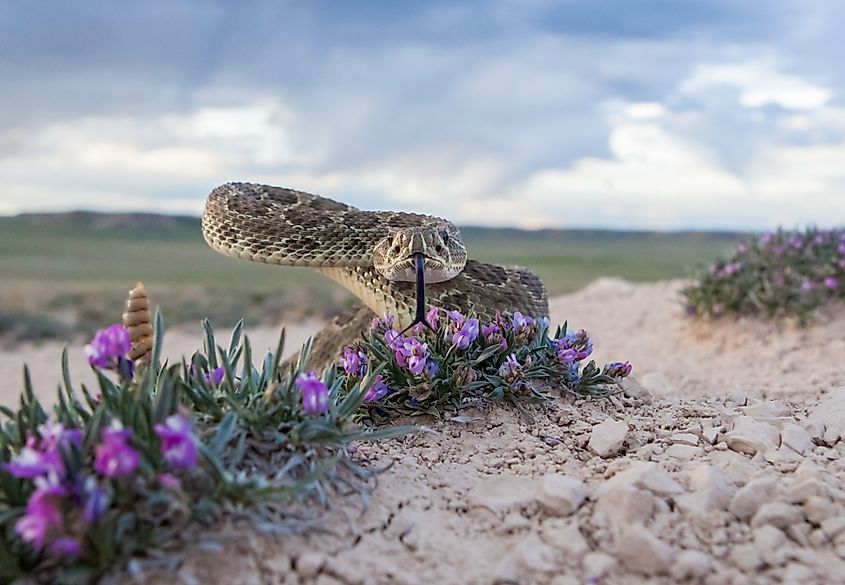
Similar to the Western rattlesnake, the prairie rattlesnake (Crotalus viridis) has a light brown to greenish-gray color with darker blotches and a distinct rattle at the end of its tail. Prairie rattlesnakes are found throughout the western and central regions of North Dakota, especially in grasslands and prairies. Like its western counterpart, the prairie rattlesnake’s venom is dangerous and can lead to severe medical complications if bitten. Take the same precautions as with the Western rattlesnake. Stay on designated trails, be mindful of where you step or reach, and always keep an ear out for that tell-tale rattle.
Moose
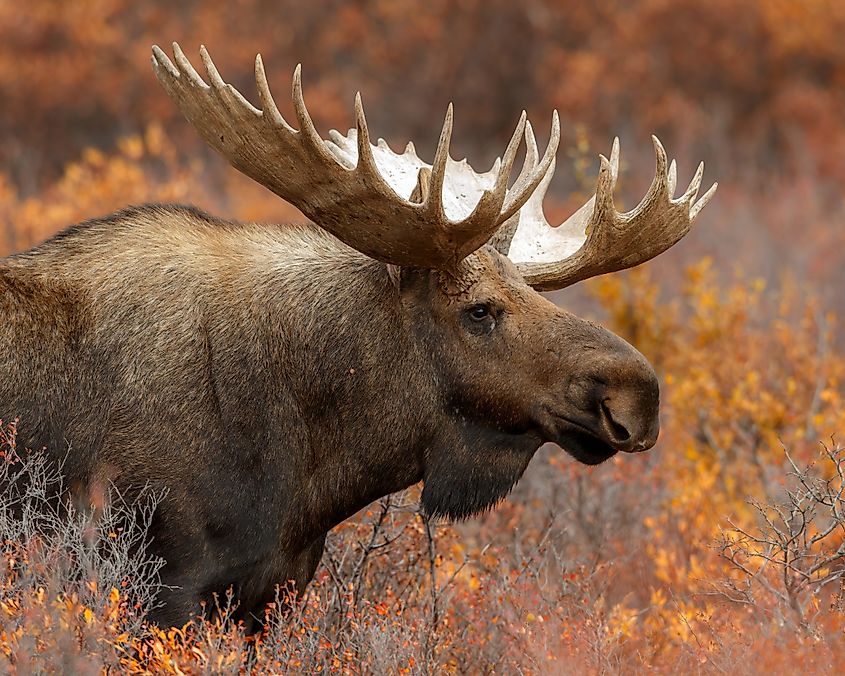
Moose (Alces alces) are the largest members of the deer family, with long legs, a humped back, a dark brown coat, and massive antlers in males. Moose are found in the forested and wetland areas of North Dakota, particularly in the Turtle Mountains and along the Canadian border. Moose can be extremely aggressive, particularly during the rutting season or if they feel their young are threatened. Their large size and powerful legs make them capable of causing severe injuries or fatalities. Maintain a safe distance from moose, especially if you see calves nearby. If a moose charges, try to find a solid object like a tree or vehicle to place between you and the animal.
Brown Recluse Spider
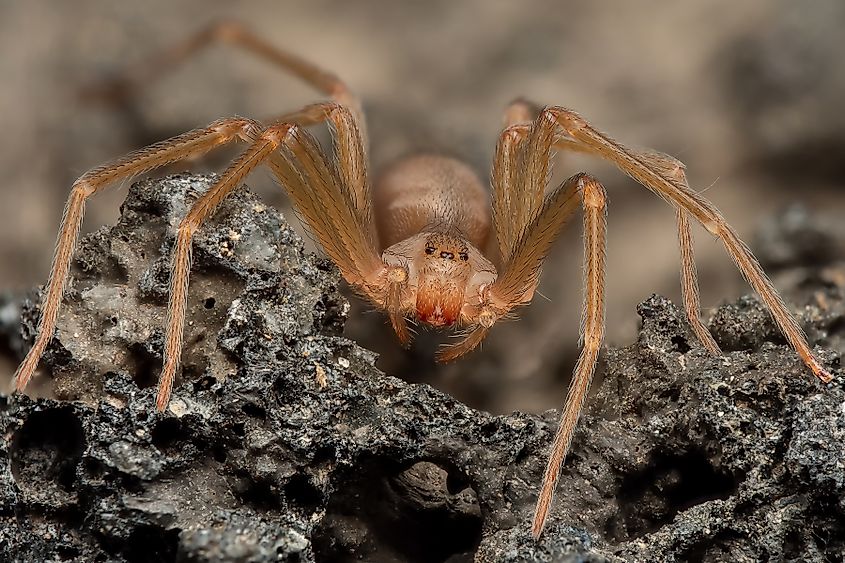
The brown recluse spider (Loxosceles reclusa) is brown and has a violin-shaped mark on its back. These spiders prefer dark, undisturbed areas (hence the name recluse) and are found in homes, garages, and storage sheds across North Dakota. The venom of the brown recluse can cause necrotic wounds that may take weeks or months to heal. Severe bites can lead to systemic symptoms and, in rare cases, death. Keep your home and outbuildings clean and free of clutter. Similar to the Black Widow, gloves should be used when reaching into dark or rarely used spaces. If bitten, seek medical attention immediately.
Mosquitoes (Several Species)
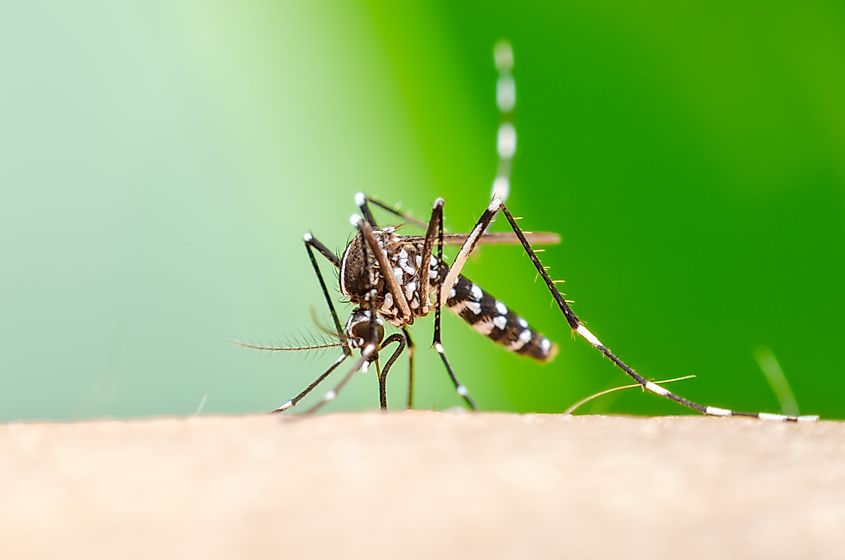
While many consider the mosquito more a pest than a danger, these biting, blood-sucking insects are vectors for several diseases. North Dakota has over 40 different species of mosquitoes, and a few have been positively confirmed to have West Nile Virus (WNV), a potentially deadly disease. Other diseases they potentially carry include St. Louis encephalitis virus (SLEV) and Rocky Mountain Spotted Fever. Distinctive for their whine and biting activity around dawn and dusk, mosquitos are best defended against via a good offense: eliminate standing water around your home to reduce larvae, and use bug spray with DEET or protective clothing when outside.
White Tailed Deer
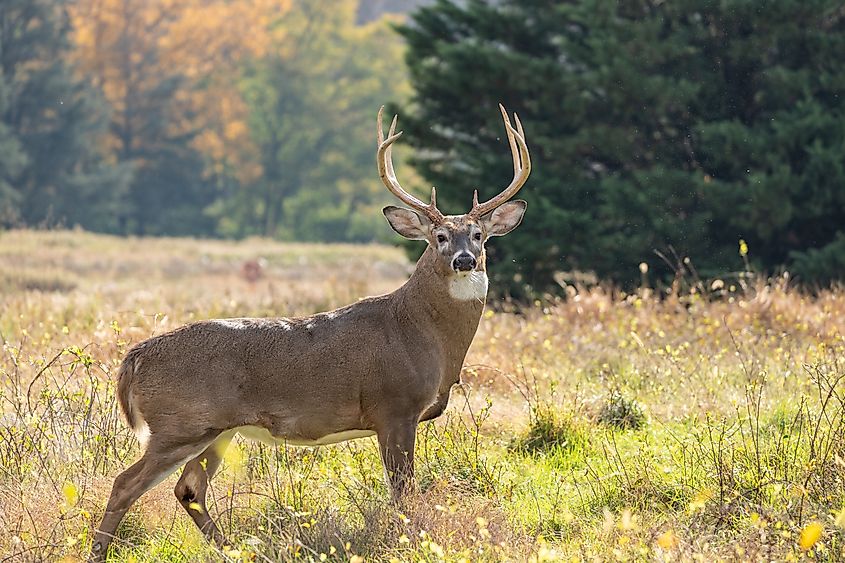
Anyone who has driven a highway for any length in the United States knows full well that though white-tailed deer (Odocoileus virginianus) are herbivores, they can be dangerous. With a light brown coat, antlers for males, and a fluffy white tail that earns it its name, the white-tailed deer ranges throughout North Dakota, from remote wilderness to genteel suburb. This is its danger: its territory often intersects with roads, and deer-precipitated crashes can prove deadly not just for the deer but also for the driver, particularly on highways at high speed. There’s not much avoiding them; simply be vigilant while driving and always turn your brights on long, uninhabited roads where deer might be bold.
Coyote
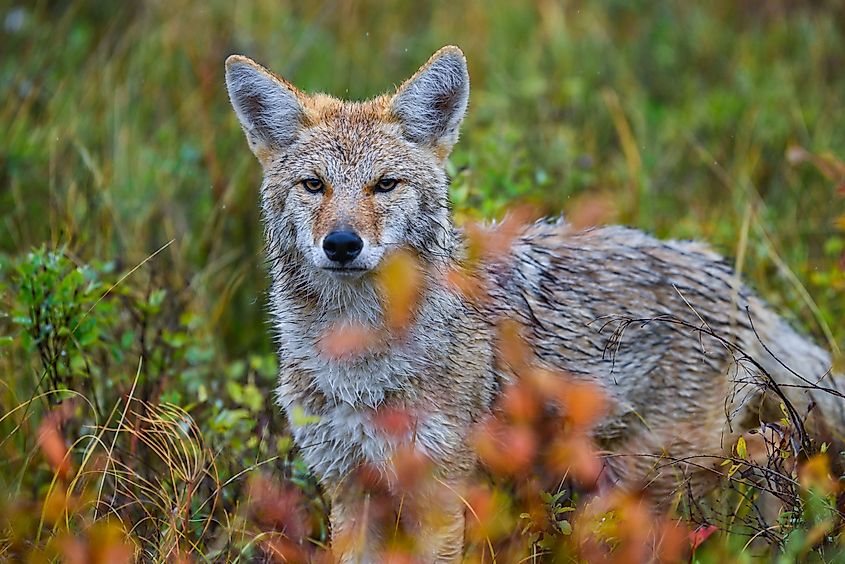
Coyotes (Canis latrans) are medium-sized canines with a grayish-brown coat, pointed ears, and a bushy tail. While they might seem cute, they can also pose a severe danger to you and especially your pets. These trash-loving scavengers are adaptable and can be found throughout North Dakota in both rural and suburban areas. Coyotes are opportunistic predators and will attack pets and, in rare instances, humans. They can also carry diseases like rabies, which are dangerous to humans and pets. Do not leave food or garbage outside that might attract coyotes. Keep pets indoors, especially at night. If you encounter a coyote, make loud noises and try to appear larger to scare it away.
North Dakota's landscape is as diverse as its wildlife, presenting both beauty and danger. While the animals listed above are indeed dangerous, understanding their behavior and taking proper precautions can significantly reduce the risk of negative encounters. By respecting these animals' habitats and learning to coexist safely, we can enjoy North Dakota's natural wonders while minimizing the potential for harm. Remember always to keep a safe distance, be aware of your surroundings, and follow the recommended safety guidelines when exploring the great outdoors.










